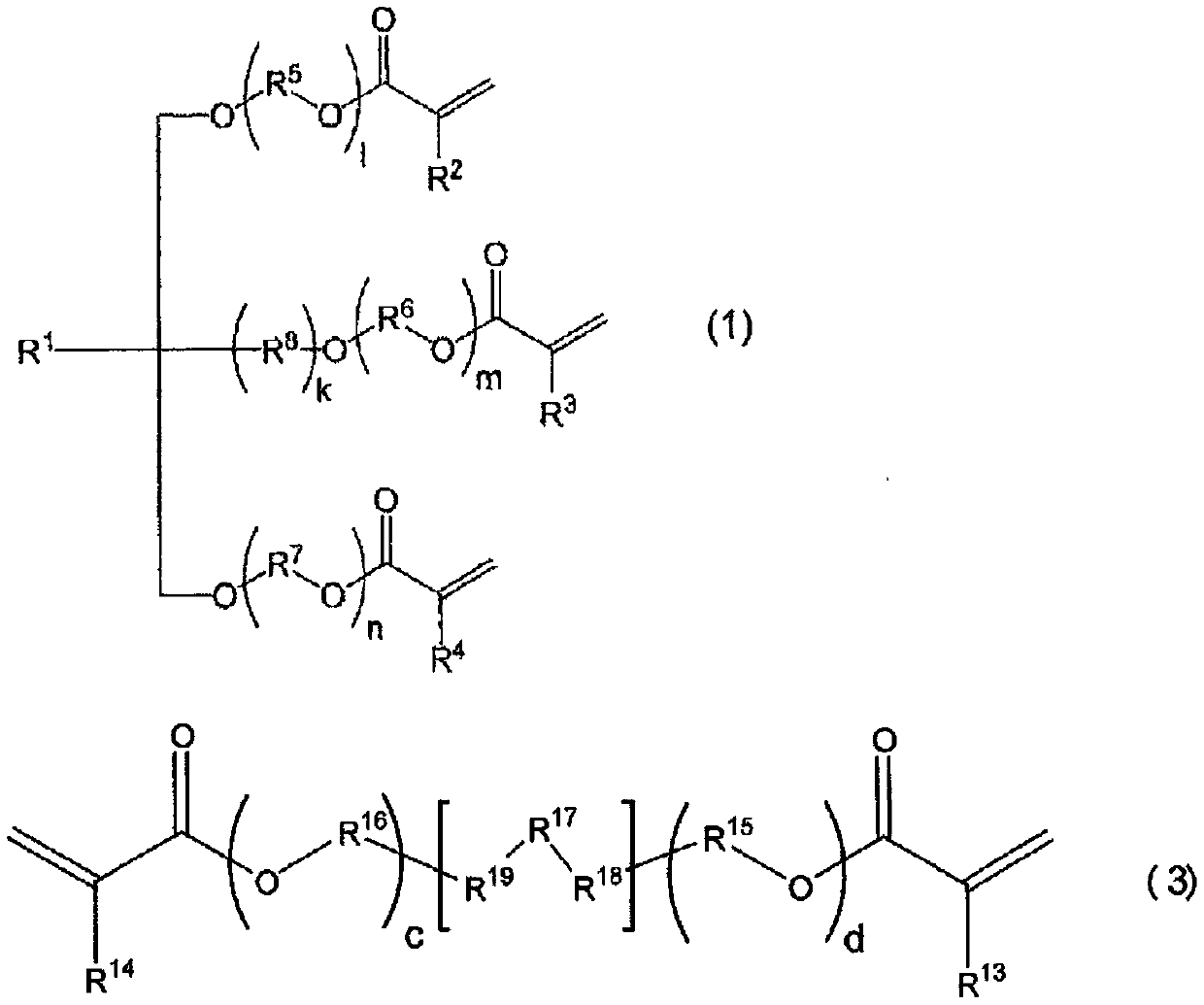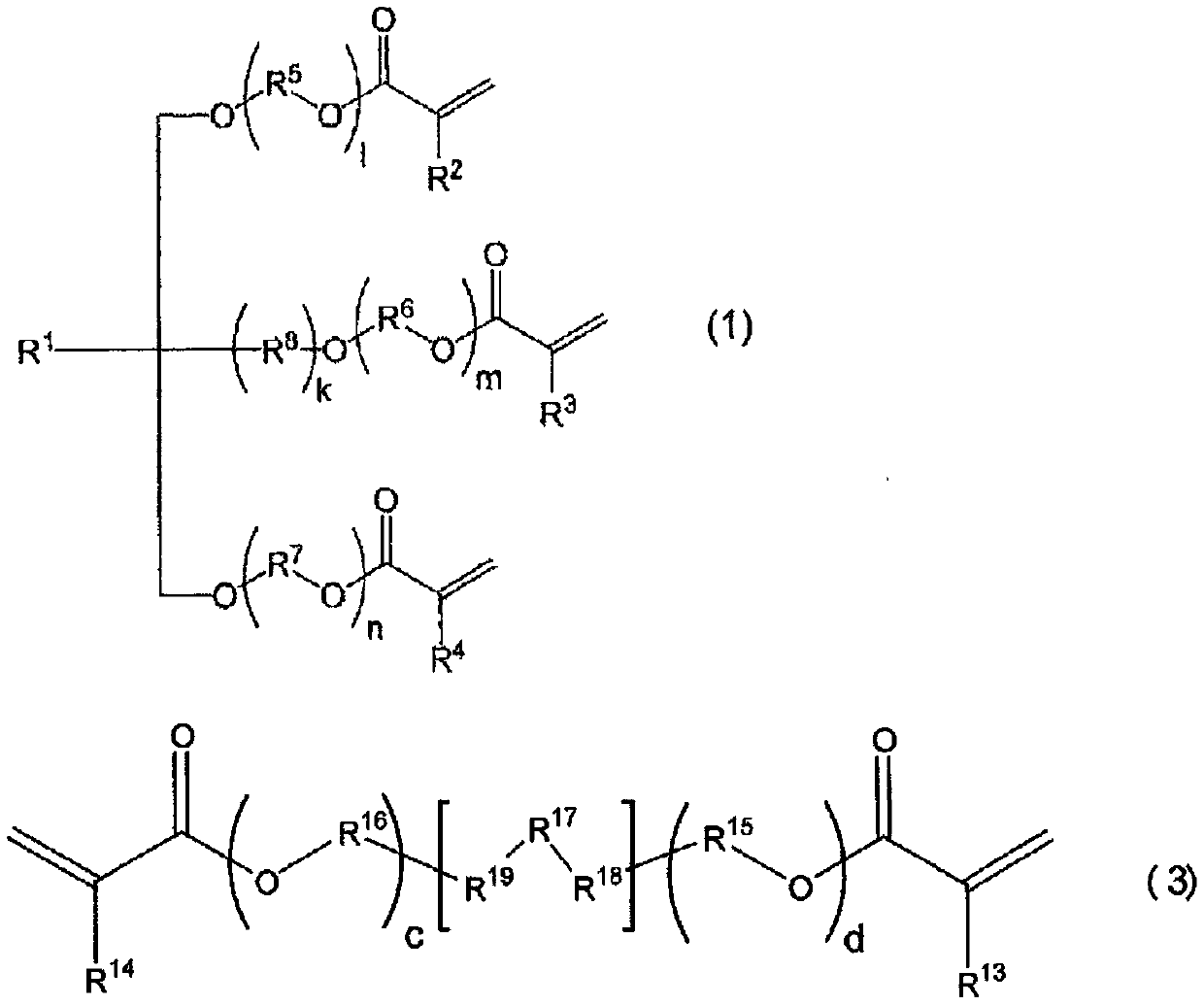Photocurable inkjet ink
A photohardening and ink technology, applied in application, ink, optics, etc., can solve the problems of insufficient discussion of monomer volatility, high volatility, and difficulty in being used as inkjet ink, etc., and achieve re-ejection. good effect
- Summary
- Abstract
- Description
- Claims
- Application Information
AI Technical Summary
Problems solved by technology
Method used
Image
Examples
preparation example Construction
[0168] 1.10.1. Preparation method of inkjet ink
[0169] The inkjet ink of the present invention can be prepared by mixing various components as raw materials by a known method.
[0170] In particular, the inkjet ink of the present invention is preferably prepared by mixing the components (A) to (D) and other components as needed, and filtering and degassing the resulting solution. The inkjet ink of the present invention prepared in this way is excellent in dischargeability at the time of inkjet coating. For the filtration, for example, a filter made of fluororesin, polyethylene, or polypropylene can be used.
[0171] 1.10.2. Viscosity of inkjet ink
[0172] The inkjet ink of the present invention has a viscosity at 25° C. measured with an E-type viscometer of 1 mPa·s to 200 mPa·s, preferably 2 mPa·s to 150 mPa·s, more preferably 3 mPa·s to 100 mPa·s. When the viscosity is the above, when the inkjet ink of the present invention is applied by the inkjet method, the discharge p...
Embodiment 1
[0263]
[0264] The evaluation liquid 1 was obtained by mixing and dissolving the materials shown below.
[0265] Pentaerythritol tetra(tri)acrylate (using M305) 4.5g
[0266] (B) VEEA 2.5g
[0267] The viscosity of the evaluation liquid 1 was 31.7 mPa·s, and the non-volatility was 80.0%.
Embodiment 2~ Embodiment 3、 comparative example 1~ comparative example 11
[0269] Except having used the material shown in Table 1 instead of monofunctional monomer (B), evaluation liquid 2 - evaluation liquid 14 were prepared by the same method as Example 1, and the measurement of the viscosity and the measurement of non-volatility were performed.
[0270] [Table 1]
[0271]
[0272] As shown in Table 1, Examples 1 to 3 have a viscosity of 70 mPa·s or less and a non-volatility of 75% or more, so they are suitable for forming fine patterns as photocurable inkjet inks.
[0273] The viscosities of Comparative Examples 1 to 6 are 70 mPa·s or less, and the non-volatility is 75% or less. Therefore, it is considered that when used as an inkjet ink, the fine particles drawn due to volatilization of the monofunctional monomer The shape of the pattern is damaged, and it is difficult to obtain a stable pattern shape.
[0274] The viscosities of Comparative Example 7 and Comparative Example 8 are 70 mPa·s or more and the non-volatility is 75% or less. There...
PUM
| Property | Measurement | Unit |
|---|---|---|
| viscosity | aaaaa | aaaaa |
| viscosity | aaaaa | aaaaa |
| viscosity | aaaaa | aaaaa |
Abstract
Description
Claims
Application Information
 Login to View More
Login to View More - R&D
- Intellectual Property
- Life Sciences
- Materials
- Tech Scout
- Unparalleled Data Quality
- Higher Quality Content
- 60% Fewer Hallucinations
Browse by: Latest US Patents, China's latest patents, Technical Efficacy Thesaurus, Application Domain, Technology Topic, Popular Technical Reports.
© 2025 PatSnap. All rights reserved.Legal|Privacy policy|Modern Slavery Act Transparency Statement|Sitemap|About US| Contact US: help@patsnap.com



